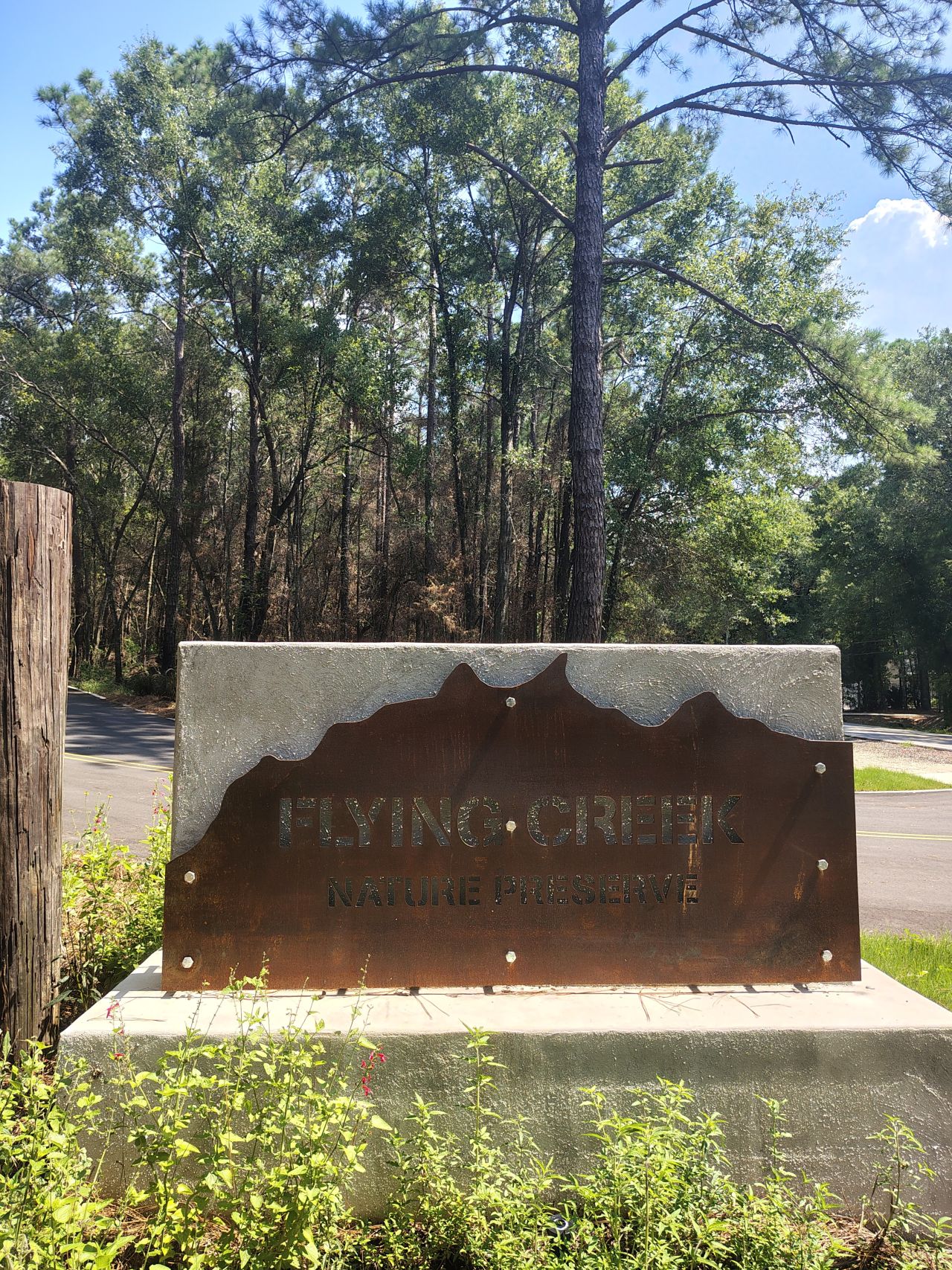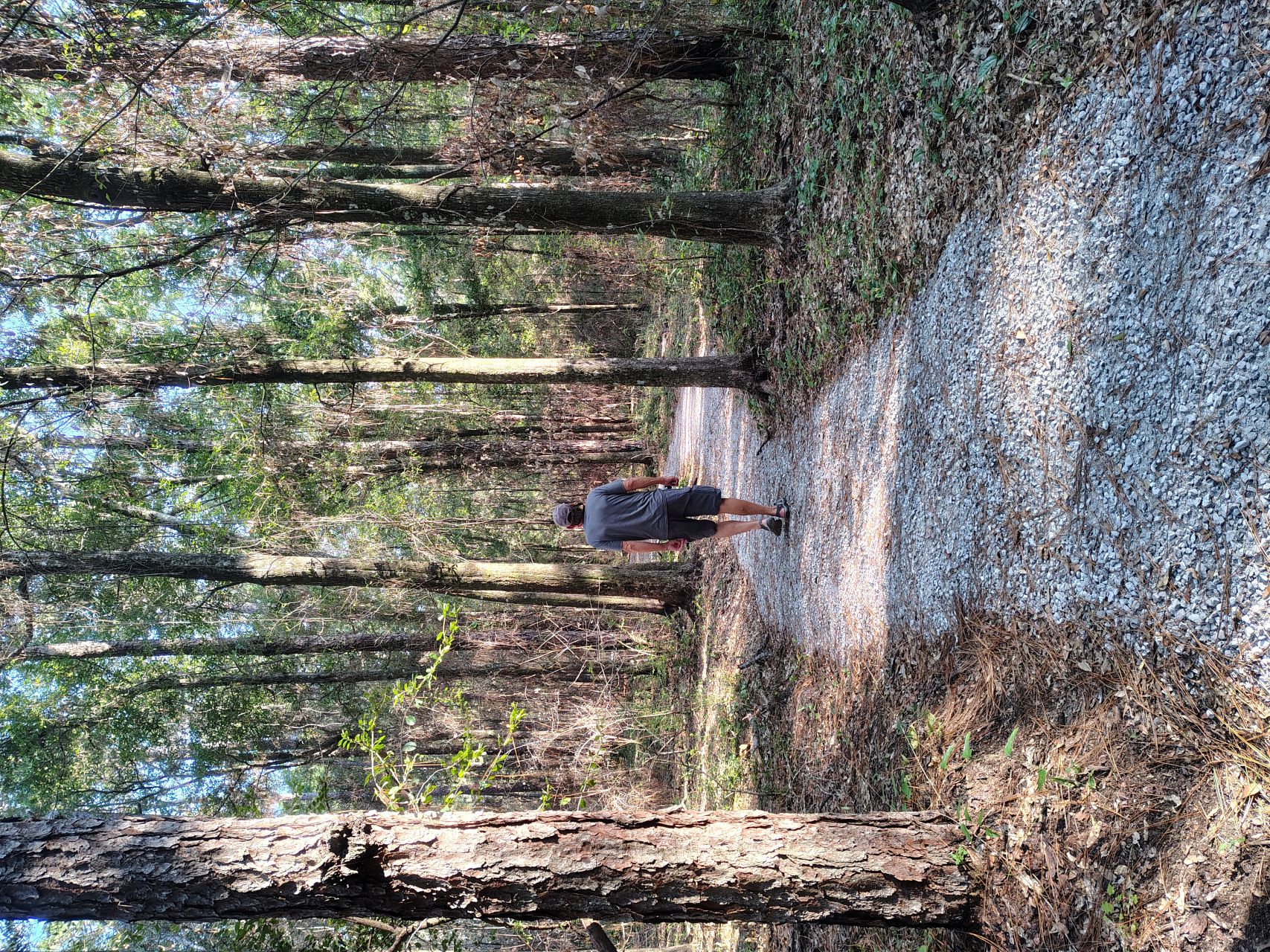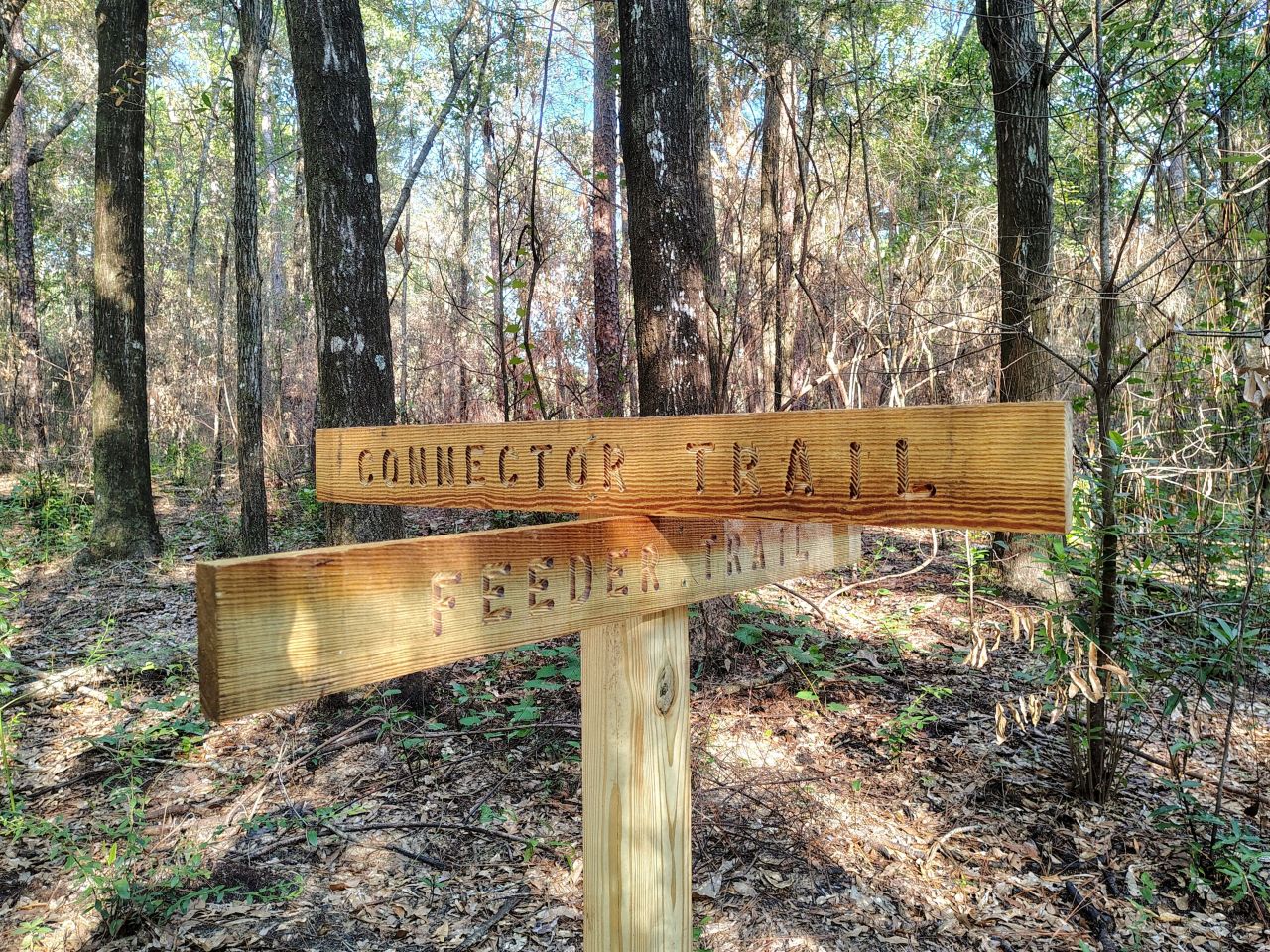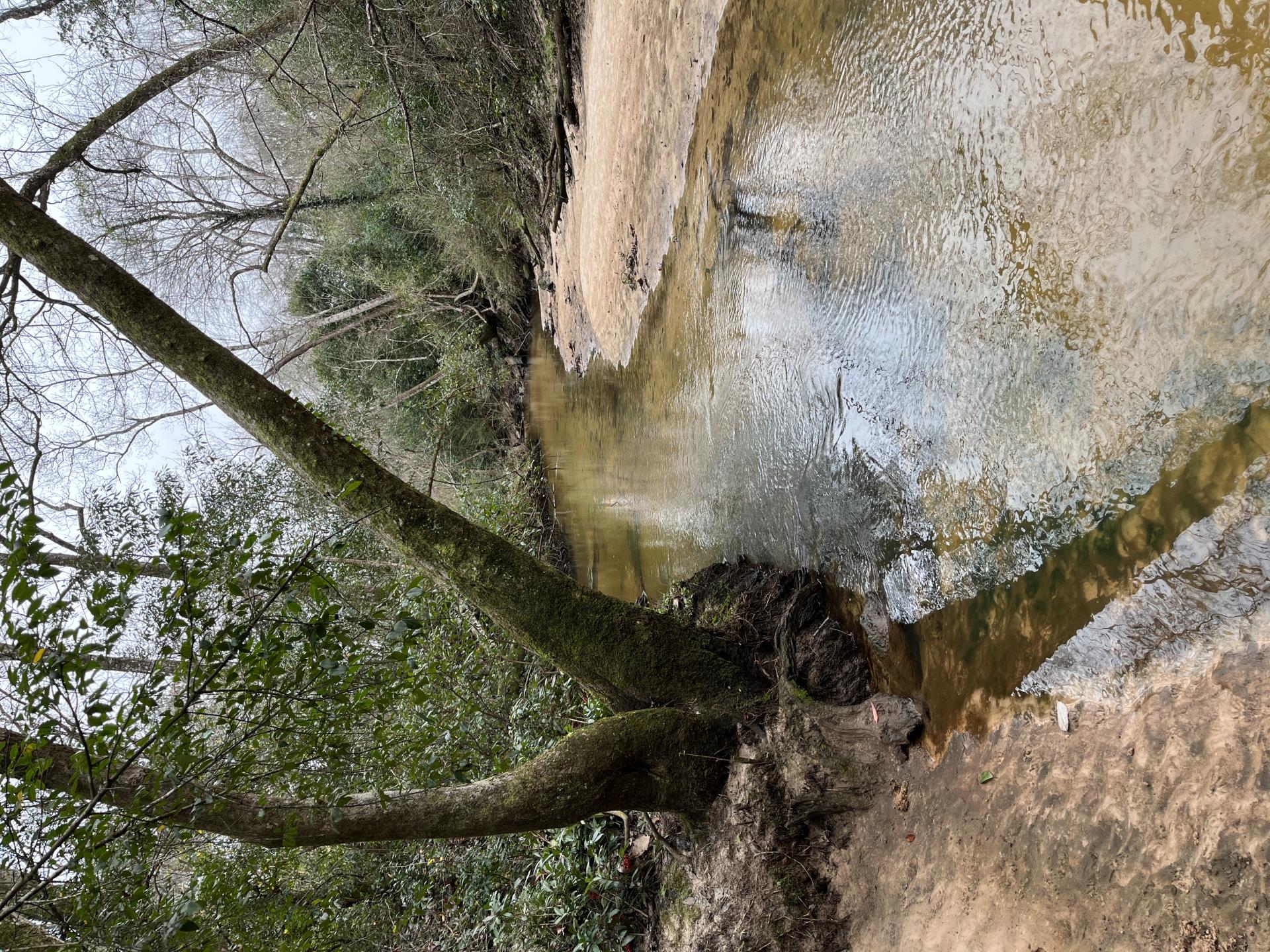
If you haven't been by the big piece of property long known as "the Triangle" in a while, you're in for some surprises. It's now home to Flying Creek Nature Preserve, which is the newest sparkling jewel in Fairhope's shiny crown.
At just over 100 acres, the parcel has long served as a wooded gateway to the city. Now there are a few amenities there for nature lovers who can freely experience scenic beauty in an unspoiled setting, and it's just a couple of miles from downtown. I visited there a couple of times last week and thought of it as a vivid reminder of how the Eastern Shore looked before the extensive commercial and residential development.
I took my time walking and looking around. Here's some of what you can expect when you visit:
The entrance to Flying Creek Natural Preserve is on the east side of Main Street/Scenic U.S. 98 as you're heading from Fairhope toward Montrose. It's on the northwest side, opposite the floral clock landmark, of the new traffic circle that connects old 98 with Veterans Boulevard and Triangle Drive/Highway 104.
What you're seeing now is just the initial phase, where 72 acres are dedicated to what's being called "passive" outdoor recreation. Another 36 acres on the other side of Veterans Boulevard is an "active" parcel that will be geared more toward hikers and mountain bikers.

Forming the boundary of the new park's northern edge is Fly Creek, and this brings up the first surprise you many encounter. While this has long been established as the common name of the waterway, city officials went back to the name given centuries earlier.
"The term 'Flying Creek' is a direct translation of the French name Bayou Volante, bestowed by early French explorers who settled along the Gulf Coast after the Spanish," according to the city's background on the project, which is available online. "The name likely described the swift current of the creek, a notable feature that would have been significant for navigation and settlement."
Once you turn off Scenic 98, you'll roll onto a smooth, new two-lane blacktop that leads to parking spaces and an information kiosk and then circles around to a multi-story split-level Nature Center. There are public restrooms there, two classrooms and a spacious wooden deck that overlooks a forested area along the creek bed. On the deck, you may not hear any rushing waters from the nearby creek like the French did, but you'll get a feel for the tranquility and soothing natural sounds that the preserve offers.
Inside the thicket, three-and-a-half miles of trails (some of them dirt and some covered in crushed stone) snakes under a canopy of hardwoods and pines to reveal a complex ecosystem of flora and fauna. Seven acres of the parcel is being restored as a longleaf pine forest, and other areas are being managed in ways to attract birds and butterflies.

Walking through the slightly hilly terrain, you'll pass knee-high educational placards that call attention to various species of trees and shrubs. Pausing to read the signs, I learned that the variety includes laurel oaks, beech trees, black gums, silver maples, sparkleberries and devil's walking stick, with its "viciously sharp thorns."A covered pavilion with heavy rustic e wooden tables and a free-standing restroom facility within the woods encourage visitors to linger and observe.
One of my favorite parts of the preserve was a thickly shaded spot down by the creekside where tree stumps and logs were arranged for seating on the soft, sandy ground. It was easily five degrees cooler here, maybe more. I learned later that this inviting area was designed as an outdoor classroom.

Following the simple wooden trailer markers, walkers can choose different paths with names like Connector Trail, Primitive Trail, Feeder Trail, Gully Trail and Carriage Trail (which follows the route that would take you to town a century ago). The Tunnel Trail leads to a concrete pedestrian underpass, which has interior lighting and is decorated with a colorful mural. It will one day lead to the “active” section of the park.

In the meantime, the city of Fairhope has created (or salvaged, you might say) a sizable new section of greenspace aimed at those who enjoy so-called passive outdoor recreation. The impressive new project came at a cost, for sure: the city purchased the property from the Dyas family for $8.75 million in 2013 to preserve it and prevent development of a high-density subdivision. To construct the new park's amenities, the city has received funds from the Alabama Department of Conservation & Natural Resources as well as $2.3 million in grant funds through the Gulf of Mexico Energy Security Act (GOMESA).
Surely some people will complain about spending that kind of money for a chunk of land that will remain mostly in its natural state. Many others, like the smiling crowds that came out Saturday for the grand opening ceremony, welcome it as a bold move that carries forward the philosophy of the conservation-minded colonists who founded Fairhope 131 years ago.
Flying Creek Nature Preserve is at 22430 Main St. and is open daily from dawn to dusk. Once completed, the John Martin Nature Center will be open 7 a.m. - 5 p.m.
























